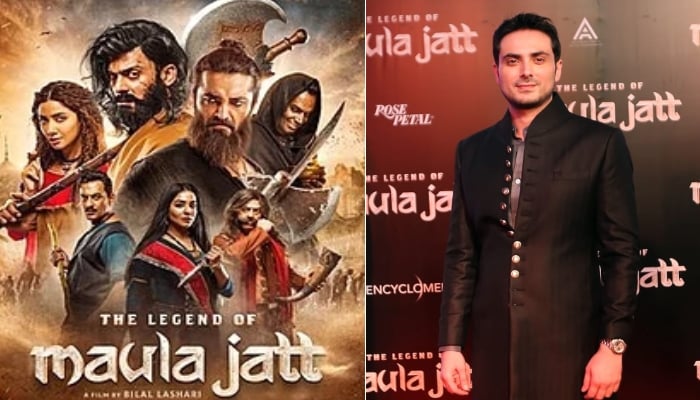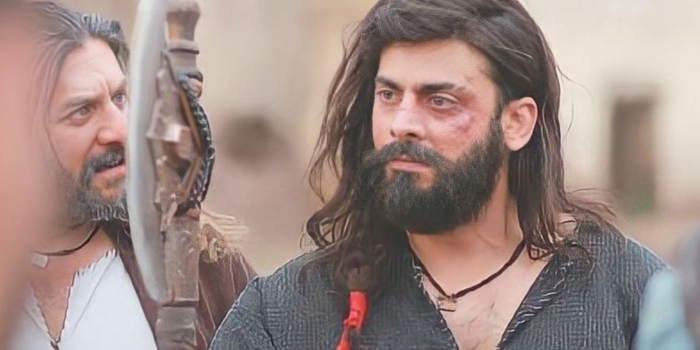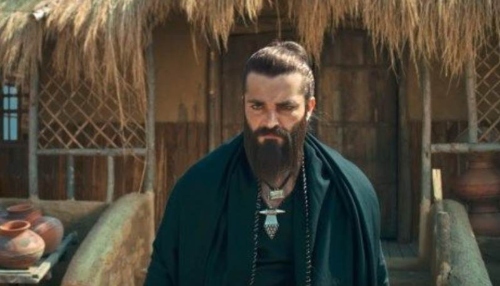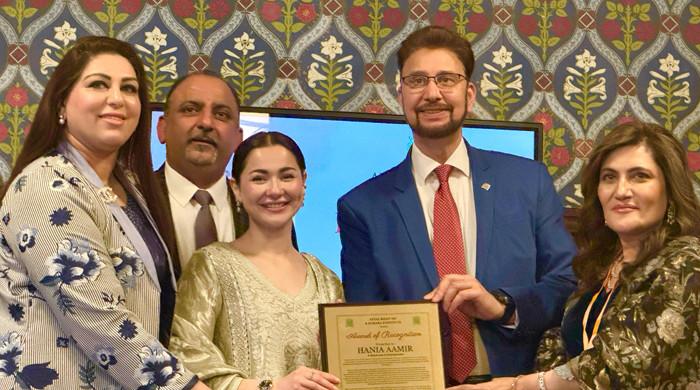The 'risk taker:' Bilal Lashari revisits 'lifetime experience' of making 'The Legend of Maula Jatt'
'The Legend of Maula Jatt' director Bilal Lashari credited the film's team and cast for its epic success
November 02, 2022

The Legend of Maula Jatt continues to break box office records as the magnum opus has become Pakistan's first-ever film to hit the PKR 150 crore mark!
Defining the groundbreaking idea behind the making of TLoMJ, director Bilal Lashari reflected on his journey of challenges and determination in the making of Pakistan’s biggest cinematic experience.
In an exclusive conversation with Geo news, Lashari talked about the overwhelming response the film has received globally and discussed his approach towards re-defining the long-forgotten genre of Punjabi language ‘Gandasa’ movies.
“It was nice to revisit the idea but at the same time, it was a great challenge to reinvent it on a big scale,” said the director during a telephonic conversation with Geo news.
Lashari explained that the gandasa genre was blamed for the downfall of the Pakistani film industry but “unfortunately, the cult genre did not evolve with time.”
“Gandasa movies didn’t age well in their capacity. It got stuck in a loop,” he further added. He went on to share that the idea of making TLoMJ came to him during Waar (2013) adding, “It was the last thing expected from me,” he jokingly said.
Lashari, who worked as an assistant director to Shoaib Mansoor on the 2007 release Khuda Kay Liye admitted that TLoMJ announcement came “as a shock for many people.”
“I received mixed reactions from my close friends. There was some negative feedback from people as well because they were not ready to visualize the revival of Punjabi gandasa movies.”
It would do justice to name Lashari, the ultimate ‘risk taker’ of his time for his experimental approach to making a blockbuster film in the history of Pakistani cinema. The director himself sees it as a matter of personal effort to make something big and impactful.
“Every film itself is a risk no matter how big or small the budget is,” he said. “For me, making TLoMJ was a lifetime experience as I challenged my comfort zone of filmmaking.”
The director recalled when the audience and fellow industry peers asked him to make a sequel of Waar and shared, “I didn’t want to stay in my comfort zone. Waar 2 would be like me repeating myself which I never wanted to do.”
“Same goes for the TLoMJ, there will be no sequel because I don’t want to repeat myself,” Lashari said, adding, “If I do it, I will be outdated. I aim to learn new things and I am cautious about what I make next for the audience.”

Lashari has played various important roles behind the camera for TLoMJ including, the director, screenplay writer, editor as well as director of photography (DOP). He revealed that he enjoyed every part in the making of TLoMJ but most of all, as a DOP.
“It was a challenging task to create a world that follows the plotline of the film. Everything including the production design, set designing, cinematography and photography was creatively designed to connect the uniformity in a half fantasy – half real world in the film,” he said.
Lashari admitted that performing multiple roles was difficult and yet interesting for him at the same time. “I enjoyed the screenplay writing part the most,” he said.
“It was a huge relief for me when I got done with the screenplay writing part,” he shared. Lashari also revealed that getting the original writer of 1979 Maula Jatt, Nasir Adeeb, to be the dialogue writer for TLoMJ was an interesting task.
“I was expecting him to come to my wavelength because it was not an option to change the nature of this project,” he explained.
Speaking of the challenges, Lashari revealed that the post-production of TLoMJ took a lot of time and patience. “By 2019, a major shoot of the film was done and we were out of budget to finish the visual effects required during post-production,” he shared.
The director lauded film producer Ammara Hikmat for sticking by the project through thick and thin as the production hired internationally acclaimed freelancers to finish the post-production part of the film.
Lashari’s TLoMJ stars a stellar ensemble of the cast including Fawad Khan, Hamza Ali Abbasi, Mahira Khan, Humaima Malick, supported by Mirza Gohar Rasheed, Faris Shafi, Ali Azmat, Nayyer Ejaz, Shafqat Cheema and more.

Speaking of his favorite, the director said it is hard to pick one because all of them have done outstanding jobs in their roles.
He lauded the film’s antagonist Noori Natt (played by Hamza) and responded to audience and movie critics’ claims of Noori overshadowing the heroic character of Maula Jatt (played by Fawad).
Lashari said, “Noori Nath is the central force of the film and Hamza has done amazing justice to his character.”
“Noori’s character has always been presented larger than life. He is the powerful, dynamic villain by default,” he said, adding that, “Noori’s character essays the theme of the film which is a battle of good vs. evil.”
He also explained the rich character of Daaro (played by Humaima) and said, “we took a different spin on Daaro’s character and presented her more powerful and demanding in her role.”
Lashari also revealed one of his favorite moments in the film when Daaro was given the crown turban of the Nath clan turban as it “added more powerful textures to her character following the dark background story of her birth.”
The director credited his entire team and cast members for film’s historic success. Speaking of his future projects, Lashari shared that there are some ideas he has been planning to work on. “I was waiting for a closure on TLoMJ. Now, I am waiting for the right thing to inspire me.”











